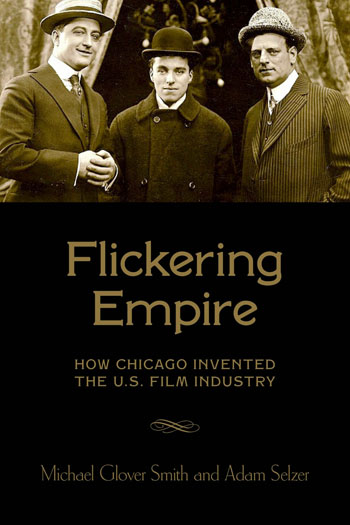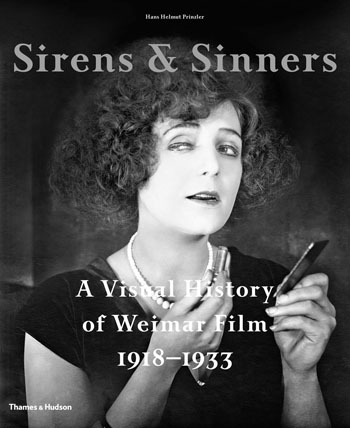“Flickering Empire: How Chicago Invented the U.S. Film Industry by Michael Smith and Adam Selzer offers a well-researched, in-depth chronicle of the Windy City’s role in cinema history,” writes Susan Doll at Movie Morlocks. “From the early 1890s to World War I, the city was a major player in the motion picture business, giving the likes of Carl Laemmle, Gloria Swanson, Wallace Beery, Charlie Chaplin and Francis X. Bushman a leg up in their careers.”
Co-author Michael Smith, meantime, has posted “outtakes” from his recent interview with Larry Knapp, editor of David Fincher: Interviews. Among the highlights here are “digressions involving Quentin Tarantino, the decadent side of the auteur theory, cinematic postmodernism and how Fincher is and is not like Alfred Hitchcock.”
“What is this thing called cinematic rhythm?” asks David Bordwell. “What contributes to it? Can we analyze it and explain its grip? Very few scholars have tackled these questions; they’re hard. In her new book, Film Rhythm after Sound: Technology, Music, and Performance, our friend and colleague Lea Jacobs takes us quite a ways toward some answers.”
“Matt Zoller Seitz‘s The Wes Anderson Collection: The Grand Budapest Hotel is fueled by a sense of escalating invention and exploration,” writes Chuck Bowen at the House Next Door. “Nothing is taken for granted in this book. You might be glancing through an interview, skimming before taking the cover-to-cover plunge, only to be side-swept by a footnote that’s a self-contained mini-essay pertaining to, say, the brief rise of narration in fiction films in the 1940s, or by a remark about an actor that segues into a brief encapsulation of their notable roles. The book is charged by an obsession that recurs in both Anderson and Seitz’s work: with getting to the bottom of something, thoroughly and resolutely.”
For Film International, Brandon Konecny reviews Hans Helmut Prinzler’s “handsome coffee table book,” Sirens & Sinners: A Visual History of Weimar Film 1918-1933, which “comes to us from Thames & Hudson, a publisher which consistently puts out extraordinary illustrated books on art and visual cultural. Thankfully, this book doesn’t betray that reputation, giving its readers images which not only testify to the beauty of their referents but also their own inherent beauty.”
James Grissom‘s Follies of God: Tennessee Williams and the Women of the Fog will be out on March 3 and the advance praise is looking mighty fine.
H.P. Lovecraft “has moved from cult writer to cultural icon,” writes Michael Dirda for the TLS. “Every year now brings a Lovecraft-themed anthology, showcasing works of both homage and lèse-majesté. Yog-Sothoth, Nyarlothotep, Cthulhu and the rest of that dark pantheon—derived in part from Lord Dunsany’s The Gods of Pegana, which Lovecraft much admired—have inspired rock bands and filmmakers, while popular role-playing games are set in ‘witch-cursed, legend-haunted’ Arkham, Massachusetts, home to Miskatonic University and its library (the repository for one of six known copies of the accursed Necronomicon of the mad Arab Abdul Al-Hazred).”
And finally for now, at Open Culture, Colin Marshall takes a look back at Jack Kirby’s 1976 comic book adaptation of Stanley Kubrick and Arthur C. Clarke’s 2001: A Space Odyssey (1968).
For news and tips throughout the day every day, follow @KeyframeDaily. Get Keyframe Daily in your inbox by signing in at fandor.com/daily.





